‘Delivering Well’ began with the creation of a compelling employer story. This strategic narrative was based on the vision and goals of the company’s CEO and his leadership team. It covered why the business needed to embark on a transformational journey, what steps would be required to reach the desired destination and what benefits the changes would bring. It consisted of three core elements:
- Vision and purpose. What Well as a business wanted to achieve and why it was necessary.
- Culture and values. How everyone at Well would need to work, both individually and as a team, to make the company’s desired goals achievable.
- Employee value proposition (EVP). What outcomes would the above have for the individual Well colleague. What experiences, opportunities and benefits could colleagues expect in return for their efforts towards the new organisational purpose and priorities?
An assurance of a reciprocal relationship
Following the creation of the employer story, the HR team at Well needed to find a way to communicate its component parts to all 4000 colleagues within the business in a way that was accessible and easy to understand. To achieve this, the HR team developed the Well People Deal.
Embedding the strategy into every employee touchpoint
To ensure the effectiveness of its transformation strategy and the authenticity of its ‘People Deal’, Well went to enormous lengths to launch these initiatives internally and externally, as well as to embed them into every stage of the employee lifecycle.
The strategy was launched internally with a companywide conference to cascade information out to managers. Managers were further supported by assets that could help them communicate the strategy to their teams, such as guides, toolkits and videos. Well also installed graphics around its working environments to explain the strategy, its goals and requirements.
Externally, Well published an open letter to the entire industry outlining its new strategy and vision, as well as inviting those with a similar mindset to join the business. Other activity, broken down by lifecycle stage, included:
- Attraction. Press and digital advertising, videos featuring colleague experiences.
- Induction. Step-by-step guides, videos and activity cards.
- Performance. Guides covering performance reviews and how to acknowledge or encourage a colleague’s alignment to the new strategy.
- Learning. Webinars and roadshows to help colleague understand the new strategy.
- Reward. The creation of various assets to ensure colleagues felt recognised and valued for their contribution towards the new strategy.
A strategy with measurable results
The effectiveness of the strategy implemented by the HR team at Well can be evidenced by:
- Increased applications. Following the implementation of the new strategy, the number of people applying to join Well has grown. On its latest recruitment drive, the business received 20,000 applications, 1000 more than the highest number of applications previously recorded.
- 200% uplift in pharmacist appointments. Well has seen the number of pharmacists successfully recruited into its business triple following the activity to date.
- Positive feedback. The transformation strategy has been welcomed by colleagues and seen as a positive step. In particular, Well team members have praised how effectively the business now stands apart from its competitors through its culture and the way this culture is brought to life.
- Widespread understanding. Up to 95% of the Well team have said that they understand the new people deal and what is required of them to fulfil it.
- More referrals. Well has seen a marked increase in employee advocacy with a 700% increase in colleague referrals via its Well ‘Refer a Pharmacist’ scheme
- Enhanced social media engagement. Thanks to the new strategy and posts surrounding it and the impact it has had on both the team and the business, Well has seen an uplift in engagement on social media. This has included a 150% increase in pharmacist applications.
- Greater colleague engagement. Well regularly conducts a colleague survey to measure engagement amongst its team. The survey conducted six months after the roll out of the new strategy revealed colleague engagement with the overall business, with their departments and with the company’s leaders had increased by almost 20% from 2019 figures.






